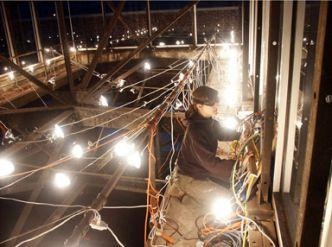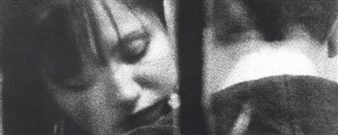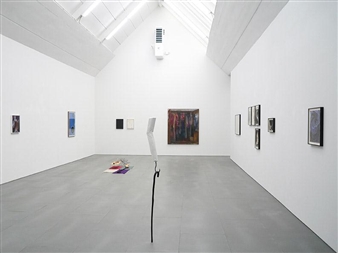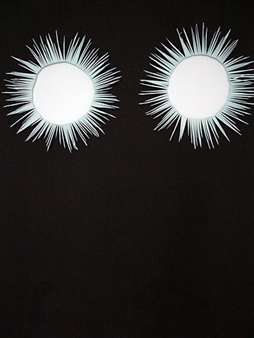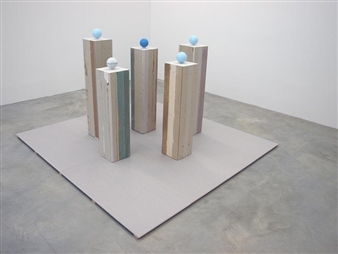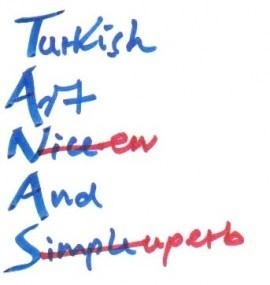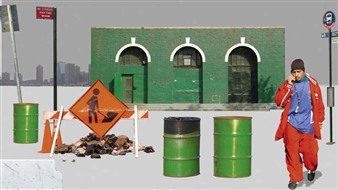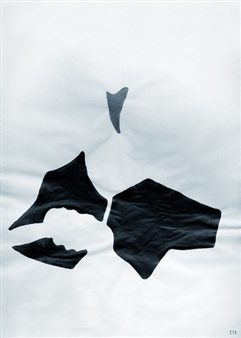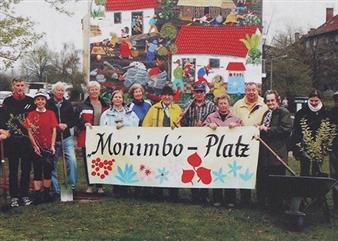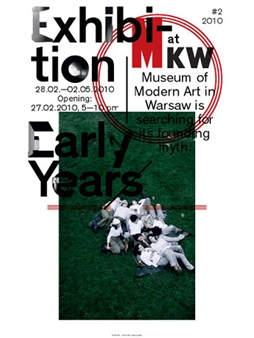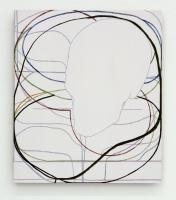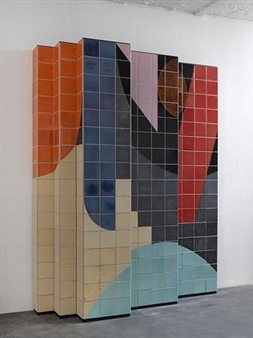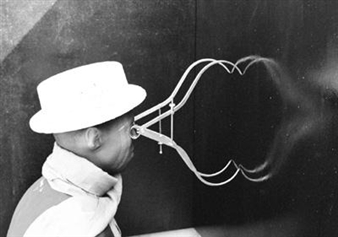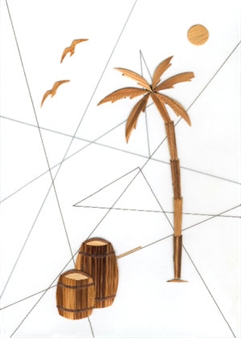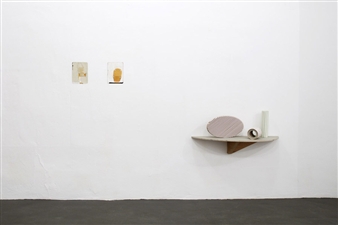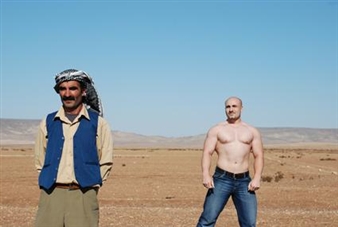Probebühne 7
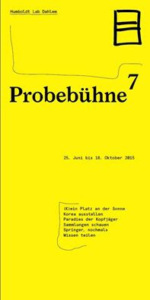
Museen Dahlem, Berlin, Berlin, 06/25/2015 - 10/18/2015
Lansstr. 8, Berlin
APT Artists Minhwa Sung and Meekyoung Shin are participating in Probebühne 7.
By no means all questions have been answered and many have yet to be posed. However the Humboldt Lab Dahlem will, for the last time, be presenting new results arising from its work. At the close of 2015, after almost four years, the program dedicated to the exploration of new exhibiting formats for the Ethnologisches Museum and the Museum für Asiatische Kunst at the Dahlem Museums – Staatliche Museen zu Berlin in the Humboldt-Forum is at an end.
Among the projects of the Probebühne 7 there is a mediation laboratory for teenagers, an online communication platform developed with representatives from one collection's region of origin, as well as various artistic interventions. Symposia and workshops are other integral aspects of the program - the discussion remains as lively as ever. At the same time the exhibition “The Laboratory Principle" will be on display. It will present the concrete results, working methodology and theoretical stimuli provided by the Humboldt Lab, while drawing critical, but at the same time optimistic, conclusions from these experiments.
Knight Moves - Again
The artistic interventions for “Knight Moves –Again" expand upon the permanent exhibitions in the Ethnologisches Museum with artistic perspectives in selected locations. The inspiration for this came about - as previously in the Probebühne 1 - from the eponymous chess figure, which can make surprising moves. Accordingly, the lateral thought patterns promoted by this project permit leaping over thematic, regional, cultural and chronological hurdles and thinking outside the box.
The curator Angela Rosenberg invited four international artists living in Berlin to present selected exhibits in a new way: Nevin Aladag, Kader Attia, Sunah Choi and Mathilde ter Heijne. Their interventions are examples of the possibilities inherent in a subjective conversation with artifacts from the collections, that can complement the scientific discourse of museum presentations both in terms of form and content.
Sharing Knowledge
“Sharing Knowledge" - the title of this project says it all. Since Spring 2014 the Ethnologisches Museum and the Universidad Nacional Experimental Indígena del Tauca (Venezuela) have been working together on the creation of an interactive website. On this site, ethnographical objects from Amazonia can be bundled, shared and expanded upon. In addition to historical ethnographic artifacts located in Berlin, objects created recently in Tauca can also be included in the discussion. Each description and interpretation of these objects is negotiable and modifiable: a common and polyphonic knowledge base is created.
Probebühne 7 will be presenting this project to the public for the first time: it was initiated by Andrea Scholz, with the website created and programmed by Studio NAND. It will be a fundamental part of the Amazon exhibition in the Humboldt-Forum, providing an insight into the living indigenous knowledge of the present.
(No) Place in the Sun
What does German colonialism mean for teenagers today? In what way does this historically charged topic impinge upon their world? And is it even possible to “narrate" or “show" it within a museum context?
In order to answer these questions, a team of mediators, scenographers and research scientists have elaborated some possible answers, and designed a space in which different voices can be heard. In this space a variety of communication formats and discussion options for teenage visitors are being tried out.
“(No) Place in the Sun" should be understood as an invitation to absorb and deal with the pivotal topic of colonialism relevant to so many areas of the Ethnologisches Museum; these experiences will be used for the Humboldt-Forum.
A project by Ute Marxreiter, Charlotte Kaiser, Paul Beaury, Cassandra Ellerbe-Dück and Indra Lopez Velasco.
Headhunters' Paradise
Over a hundred years ago the Naga became notorious as headhunters and were stylized as wild warriors by the West. But how do the Naga see themselves today as a multifaceted and, in part, modern, urban society? How do they talk about their past as feared headhunters? And why were skull trophies so important?
In view of the respective exhibition area in the Humboldt-Forum the installation “Headhunters' Paradise" opens up the most diverse perspectives on the cultural phenomenon of headhunting, using films, photos, sound recordings, texts and objects: an old Naga warrior tells of his experiences, a woman adorns herself with jewelry, two research workers and a clergyman talk about headhunting as a cultural phenomenon, and men on the village street talk about the meaning of particular artifacts.
A project by Roland Platz, Luxoom Medienprojekte and Andrea Rostásy.
Exhibiting Korea
Is it possible to create a space or a setting with regional character, but which avoids clichés and takes us beyond folkloric impression and a mere referencing of local aesthetic idiom? This question is examined by the curator Uta Rahman-Steinert together with the artists Jaeeun Choi, Inhwan Oh, Jae Yong Rhee, Meekyoung Shin and MinHwa Sung for the Korean collection in the future Humboldt-Forum. The aim is to give a greater emphasis to the relatively small number of artifacts of Korean provenance housed by the Museum für Asiatische Kunst by means of unusual scene-setting. This collaboration also questions the interpretational hierarchy of the museum as an institution, in terms of design and presentation. At the same time it creates a direct relationship with the present, by positioning itself in terms of identity and tradition. The design ideas are presented together with exemplary works by the artists. Curatorial advice: Shi-ne OH.
Concentrating (on) Collections
Publically accessible display and archive collections play a relatively prominent role in the exhibition planning for the Humboldt-Forum. The Ethnologisches Museum particularly, but also the Museum für Asiatische Kunst, are planning several display cases: high, densely-packed display cabinets, in which the significance of the individual objects is secondary to that of each collection as a whole.
But what does the public gain from looking at such density and abundance? What motivation, in terms of communication and visuals, is behind this display? And what special possibilities of presentation and narrative would be appropriate?
“Concentrating (on) Collections" tracks this potential and will be producing a manual, intended to provide useful guidelines, suggestions and criteria for further planning. For the Probebühne, the curators Nicola Lepp and Nina Wiedemeyer have put together a slideshow that examines the challenges of condensed presentation methods for museums and mediation.
For More Information
